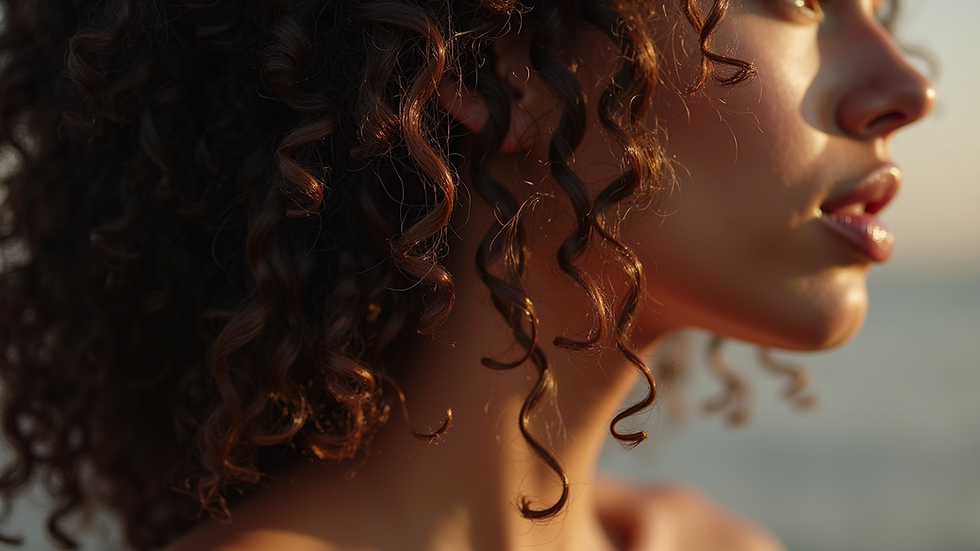Essential Tips for Styling Natural Hair at Home
- Natalie Sullivan
- 4 days ago
- 3 min read
Styling natural hair at home can be a rewarding experience when you know the right techniques and products to use. Natural hair has unique textures and needs that require special care and attention. Whether you are new to natural hair styling or looking to improve your routine, this guide will provide you with essential tips to keep your hair healthy, manageable, and stylish.
Understanding Your Hair Type for Effective Natural Hair Styling
Before diving into styling, it is crucial to understand your hair type. Natural hair comes in various curl patterns, from loose waves to tight coils. Knowing your hair type helps you choose the best products and styles that will enhance your hair’s natural beauty without causing damage.
Identify your curl pattern: Use the Andre Walker Hair Typing System, which ranges from 2 (wavy) to 4 (coily/kinky).
Assess porosity: This determines how well your hair absorbs and retains moisture. You can do a simple water test by placing a strand in water; if it sinks quickly, your hair is high porosity.
Consider density and thickness: These factors affect how much product you need and the styles that will work best.
By understanding these characteristics, you can tailor your natural hair styling routine to suit your hair’s specific needs.

Close-up view of curly natural hair texture
Essential Products and Tools for Natural Hair Styling
Having the right products and tools is key to successful natural hair styling at home. Using products designed for natural hair will help maintain moisture, reduce breakage, and enhance curl definition.
Recommended Products:
Moisturizing shampoo and conditioner: Look for sulfate-free options to avoid stripping natural oils.
Leave-in conditioner: Keeps hair hydrated throughout the day.
Curl cream or styling gel: Defines curls and reduces frizz.
Oils and butters: Such as coconut oil, shea butter, or jojoba oil to seal in moisture.
Must-Have Tools:
Wide-tooth comb: For detangling without causing breakage.
Denman brush: Great for defining curls.
Satin bonnet or pillowcase: Protects hair while sleeping.
Spray bottle: To mist hair with water or leave-in conditioner for easy styling.
Using these products and tools consistently will help you achieve beautiful, healthy natural hair styles.

Eye-level view of natural hair care products on a wooden shelf
Step-by-Step Guide to Styling Natural Hair at Home
Styling natural hair at home can be simple when you follow a clear process. Here is a step-by-step guide to help you create a polished look:
Start with clean, moisturized hair: Wash and condition your hair, then apply a leave-in conditioner.
Detangle gently: Use a wide-tooth comb or your fingers to remove knots.
Apply styling products: Use curl cream or gel to define your curls.
Choose your style: Options include twist-outs, braid-outs, wash-and-go, or protective styles like buns and updos.
Dry your hair: Air dry or use a diffuser on low heat to avoid heat damage.
Finish with oil: Seal in moisture with a light oil to add shine and reduce frizz.
This routine can be adjusted based on your hair’s needs and the style you want to achieve.
Tips for Maintaining Natural Hair Between Styling Sessions
Maintaining your natural hair between styling sessions is just as important as the styling itself. Proper care will keep your hair healthy and reduce the need for frequent manipulation.
Moisturize regularly: Use a water-based spray or leave-in conditioner daily.
Protect your hair at night: Always wear a satin bonnet or use a satin pillowcase.
Avoid excessive heat: Limit the use of flat irons and blow dryers.
Refresh styles: Use a light mist of water and styling product to revive curls.
Trim regularly: Remove split ends to promote healthy growth.
By following these tips, you can extend the life of your styles and keep your natural hair looking its best.

High angle view of natural hair styled in protective twists
When to Seek Professional Help for Natural Hair Styling
While styling natural hair at home is empowering, sometimes professional help is necessary. If you encounter persistent issues like severe dryness, breakage, or scalp problems, consulting a professional can make a big difference.
Finding a natural hairdresser near me can provide you with expert advice tailored to your hair type and condition. Professionals can also offer services such as loc extensions, deep conditioning treatments, and custom styling that may be difficult to achieve at home.
Visiting a natural hairdresser periodically ensures your hair remains healthy and styled to perfection.
Embrace Your Natural Hair Journey with Confidence
Styling natural hair at home is a journey of learning and self-expression. With the right knowledge, products, and care, you can enjoy beautiful, healthy hair every day. Remember to be patient and gentle with your hair, and don’t hesitate to seek professional support when needed. Your natural hair is a crown to be proud of - wear it with confidence!




Comments